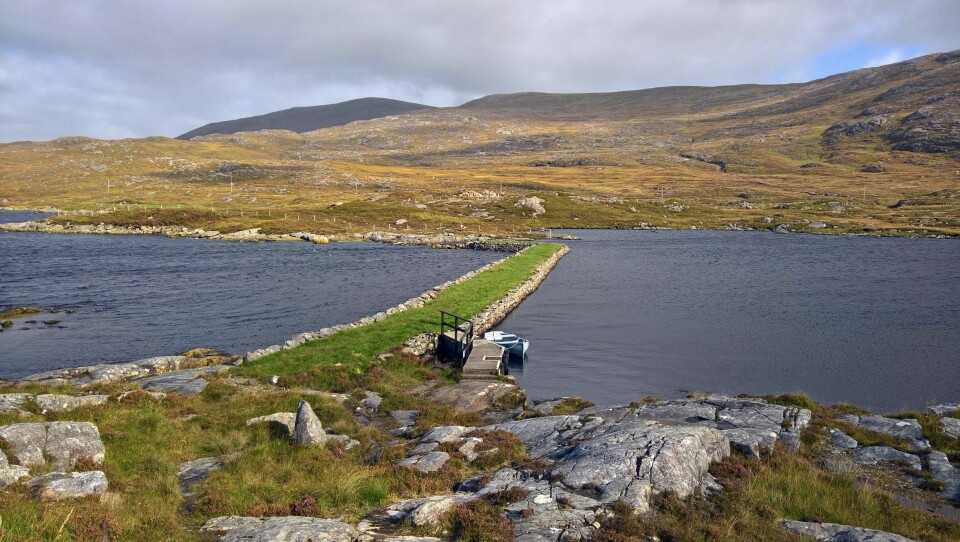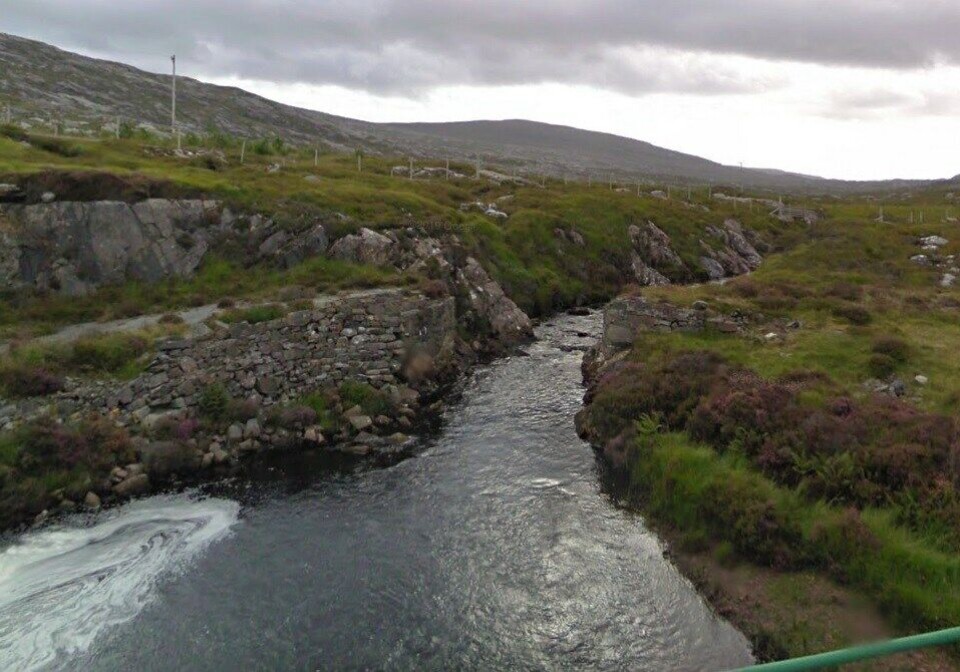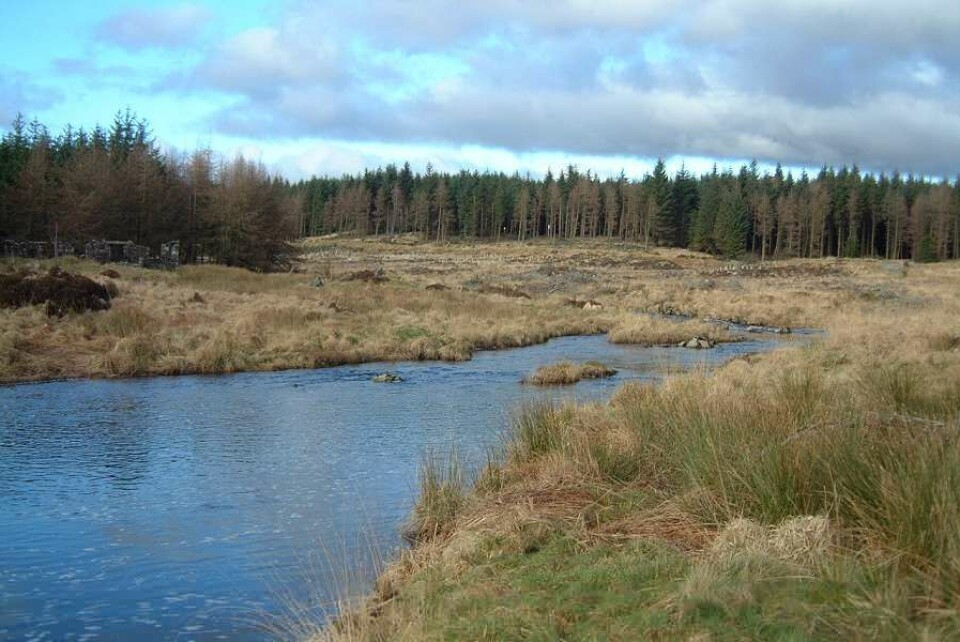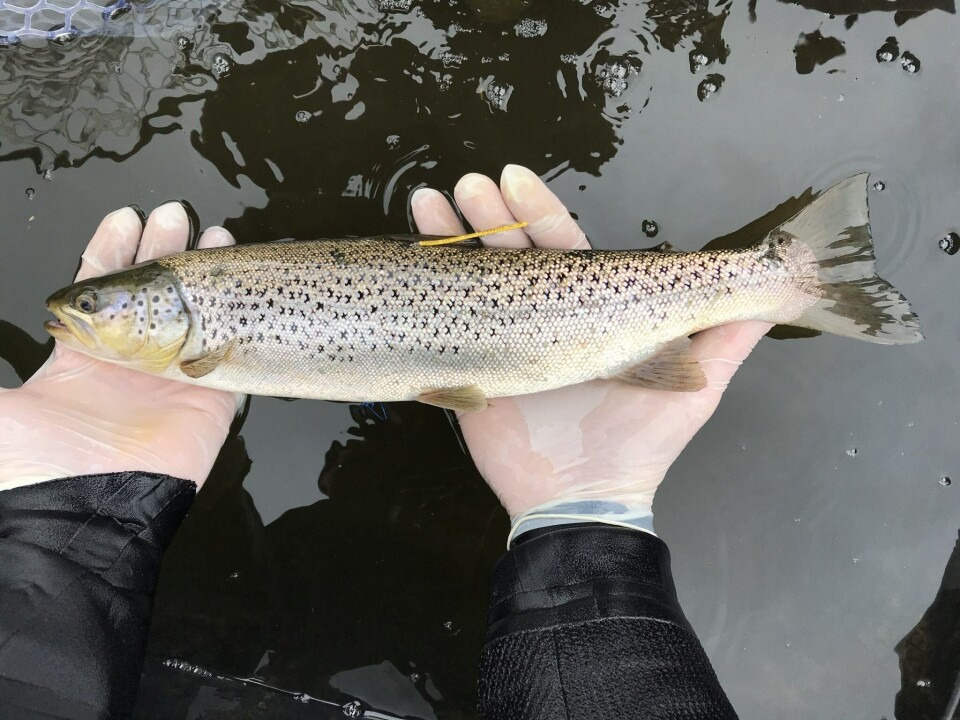
Dam good effort: salmon farmers’ fund helps wild fish get home to spawn
A historic Victorian dam on the Western Isles is among five major habitat restoration projects being funded by Scotland’s salmon farmers that are aimed at tackling the decline in wild Scottish salmon.
A total of £120,000 has been granted to organisations this year as part of a partnership between trade body Salmon Scotland and Fisheries Management Scotland to address the long-term decline in wild salmon populations.
Now in its second year, the £1.5 million Wild Salmonid Fund is financed directly by Salmon Scotland and managed by independent charity Foundation Scotland.

Leaking badly
The West Harris Trust has been awarded £35,000 to save the Fincastle Dam, which supports the western bank of Loch Fincastle and connects the Luskentyre Estuary with the freshwater of the loch and the Laxdale River where wild salmon progress to their spawning grounds.
Built in the 1890s on West Harris, the ageing dam is leaking badly, resulting in a loss of water to the small waterfall up which salmon must pass into Loch Fincastle and on up the river, threatening the entire wild salmon run.
In the summer of 2021, the danger to the wild salmon increased considerably because of the dry weather and low rainfall that is now a feature of climate change in the Hebridean summer.
The collaborative project will aim to protect an important salmon fishery in the Highlands and Islands.

The other four projects awarded funds are:
Argyll Fisheries Trust: £20,342 to fund improvement works at River Ruel and River Eachaig in the Cowal Peninsula, located in South Argyll, to reduce rates of riverbank erosion and fine sediment entering the rivers.
Ayrshire Rivers Trust: £16,775 to undertake a restoration project that will aim to address excessive amounts of silt in the Brockloch Burn.

Loch Lomond Fisheries Trust: £22,190 to address tree canopy, in-stream cover and bank erosion issues in 15 sites over five identified burns across the Lomond catchment area.
Skye and Lochalsh Rivers Trust: £25,729 to purchase practical and technological equipment that will enable the Trust to undertake an acoustic telemetry tracking study of adult sea trout.
Long decline
Wild salmon and sea trout numbers have been in decline for decades on both the east and west coasts of Scotland for a variety of reasons including habitat loss and rising river temperatures due to climate change and historic de-forestation.
Some people blame the decline on sea lice from salmon farms, but others point out that wild salmon numbers were declining long before salmon farming was established. Wild salmon numbers are also in decline in areas where there are no salmon farms.
Salmon Scotland chief executive Tavish Scott said: “Salmon farmers have a shared desire to address the decades-long decline in wild salmon populations – one of Scotland’s most iconic species.
“Wild salmon populations across the world have decreased over the past century, and it is vital that we rely on good science to help focus our attention on the real issues that are affecting wild salmon and trout populations.
Rising temperatures
“Habitat loss and rising river temperatures have been identified as major pressures on wild salmon and trout, which return to freshwater rivers to breed.
“By supporting community-led projects to restore our rivers we are playing our part in reversing the decline in wild salmon numbers and identifying solutions that not only work here in Scotland, but globally.
“Salmon farmers are delighted to share their expertise in maximising salmon survival and make a financial contribution to protect wild Scottish salmon.”























































